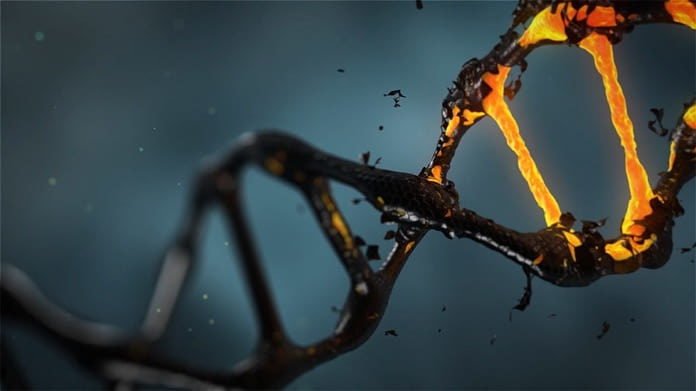Science fiction no more. A new Chinese study combines biology with nano-engineering to produce the world’s first cancer-killing nanorobot machines.
Blurring the boundaries between sci-fi and reality, nano-engineers have taken chemotherapy to new heights in a ground-breaking study from Nature Biotechnology. To aid in our fight against cancer, a team of Chinese researchers have developed microscopic DNA nanorobots that target and block blood flow to animal tumors, thereby starving them to death.
DNA Origami Folded into Nanorobots
Researchers utilized a technique called “DNA origami”, where DNA sheets are folded into tubular containers or “nanorobots” that can store life-saving drugs. Using this method, researchers packaged a type of protein called thrombin which, when released, causes blood in nearby vessels to coagulate, restricting blood flow.
To guide the DNA robots to target cancer cells specifically, scientists coated the robots with a type of molecule that binds nucleolin, a protein commonly found on cancerous blood vessels. When the robots become bound to cancer cells, their DNA sheets then unfold, releasing the thrombin and cutting off the tumors blood supply.
Tumor Growth Slowed Drastically
In mice afflicted with human breast cancer, the nanorobots caused tumor growth to slow drastically. Within 24 hours, the blood in vessels surrounding the tumor quickly coagulated, blocking cancer cells from obtaining necessary nutrients. In mice with breast cancer, the robots increased survival times from 29 days to 39 days. In mice with melanoma, survival time extended from 20.5 days to 45 days.
No toxicity was observed with the robots, as their design only allowed coagulation of cancerous blood vessels, leaving healthy vessels untouched. Being made from biological components, the robots also avoided stimulating unwanted immune responses and robot parts were easily be broken down by the liver.
Future Implications for Human Disorders
Apart from slowing down tumor growth, the robots were also able to keep cancerous cells from metastasizing to other sites. While on their own they couldn’t cure the mice of cancer, the researchers believe that with the aid of mild chemo or radiation therapy, the method could prove to be much more effective.
The authors hope that their nanorobot design may inspire other researchers to develop similar treatments for tests in humans. With the right set up, the method can be used to treat many more human disorders, delivering any sort of life-saving drug to any type of human cell.
Written by Calvin J. Chan, B.Sc.
Reference: Li, S., et al. (2018). A DNA nanorobot functions as a cancer therapeutic in response to a molecular trigger in vivo. Nature Biotechnology. doi:10.1038.



